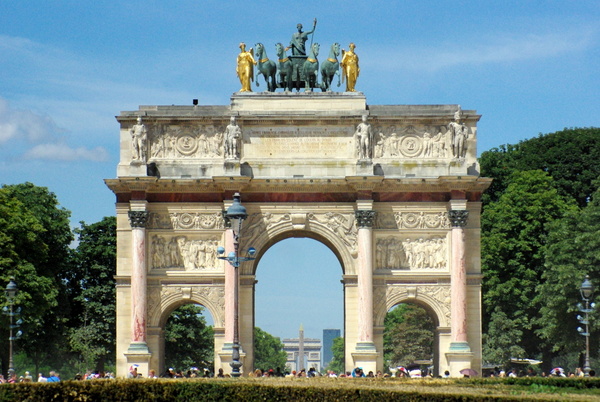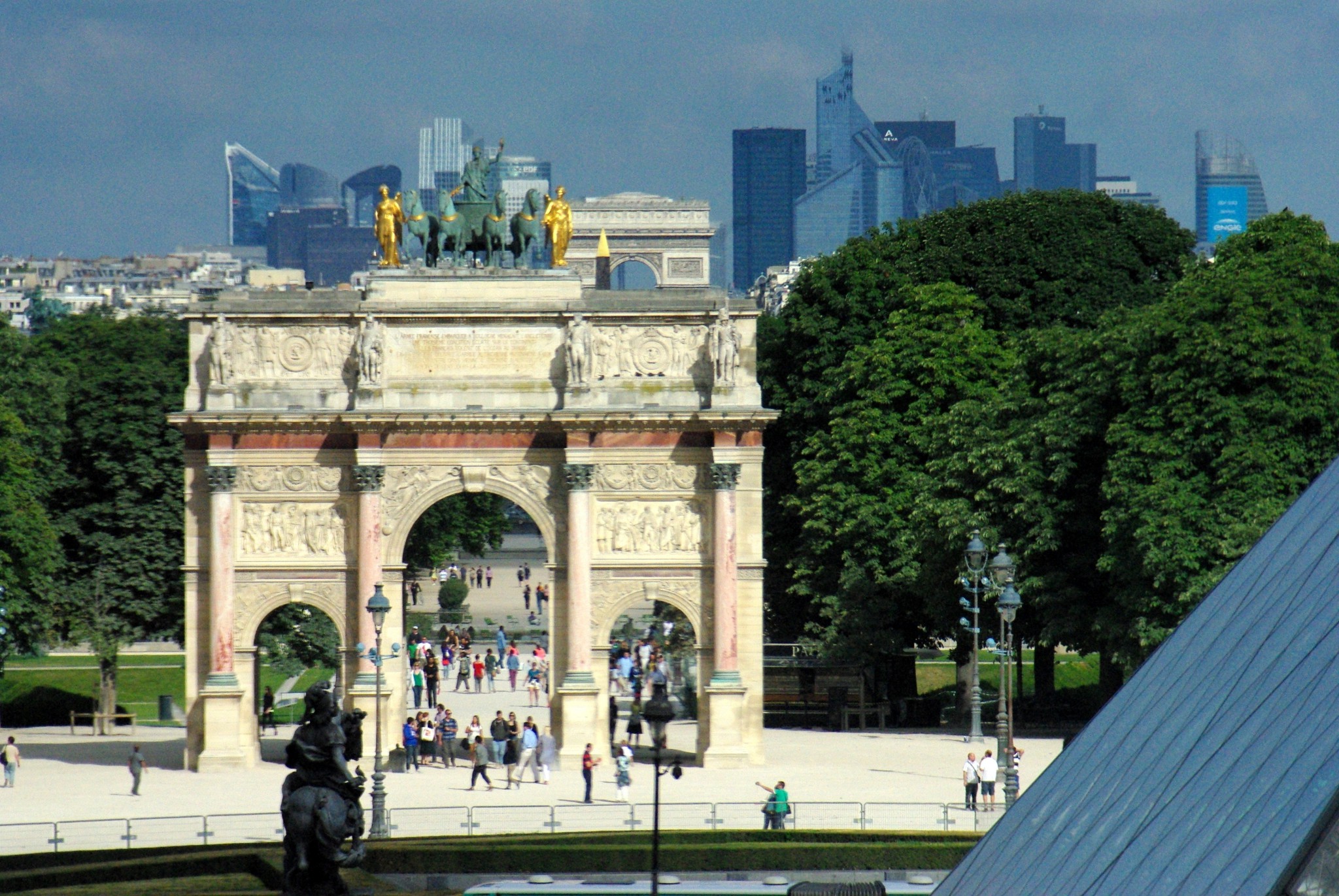The arc de triomphe du Carrousel is a triumphal arch completed by Napoleon in 1809. Situated in the 1st arrondissement of Paris on the place du Carrousel, it is an integral part of the Grand Louvre and is the second monument to be aligned with the Historical Axis.
The Arc de Triomphe du Carrousel: a bit of History

The triumphal arch was built by Napoleon from 1807 to 1808 to celebrate the victory of the French imperial army in Austerlitz. The Arc du Carrousel was designed by Charles Percier and Pierre-François-Léonard Fontaine on the model of the Arch of Septimius Severus and the Arch of Constantine in Rome. Note the resemblance of this triumphal arch to that of Nancy built some 60 years before.
Dimension and features of the Arc de Triomphe du Carrousel
At 20 metres high, the arch is relatively small compared to the Arc de Triomphe.
It comprises of three arcades in his length and a transversal one.
The bas-reliefs depict the Peace of Pressburg, the 1805 campaign (Napoleon entering Munich, Napoleon entering Vienna, the Battle of Austerlitz, the Tilsit Conference) and the surrender of Ulm. They are flanked by four columns in pink marble from Languedoc:

The upper frieze on the entablement includes statues of soldiers who served in the Napoleonic army: Auguste Marie Taunay’s cuirassier (left), Charles-Louis Corbet’s dragoon, Joseph Chinard’s horse grenadier and Jacques-Edme Dumont’s sapper.

Under the main arch is a remarkable central bas-relief:

The top of the arc is occupied by a quadriga, ie a chariot drawn by four horses abreast and rode by the allegory of Peace. The sculpture is a copy of the ‘Horses of St. Mark’ which are found on the main gate of the St. Mark Basilica in Venice. The original quadriga was brought in Paris by Napoleon in 1798 and given back to the Austrians who had the control of Venice. The copy was executed by sculptor François Joseph Bosio in 1828:

The Frontispieces
Each of the four façades contains a frontispiece with a message:

East Façade (side of the Louvre):
L’armée française embarquée à Boulogne menaçait l’Angleterre
Une troisième coalition éclate sur le continent
Les Français volent de l’océan au Danube
La Bavière est délivrée, l’armée autrichienne prisonnière à Ulm
Napoléon entre dans Vienne, il triomphe à Austerlitz
En moins de cent jours, la coalition est dissoute
South Façade (side of the Seine):
Honneur à la grande armée
Victorieuse à Austerlitz
En Moravie
Le 2 décembre 1805 jour anniversaire
Du couronnement de Napoléon
West Façade (side of the Tuileries):
À la voix du vainqueur d’Austerlitz
L’empire d’Allemagne tombe
La confédération du Rhin commence
Les royaumes de Bavière et de Wurtemberg sont créés
Venise est réunie à la couronne de fer
L’Italie entière se range sous les lois de son libérateur
North Façade (side of rue de Rivoli):
Maître des États de son ennemi
Napoléon les lui rend
Il signe la paix le 27 décembre 1805
Dans la capitale de la Hongrie
Occupée par son armée victorieuse
The Arc du Carrousel on the Historical Axis

On completion, the view of the Great Perspective from Arc du Carrousel was blocked westwards by the Tuileries Palace for the purpose of the triumphal arch was to mark the entrance to the palace. When the palace disappeared in the aftermath of the Paris Commune, the great perspective was opened all the way to the Carrousel and the Louvre.




